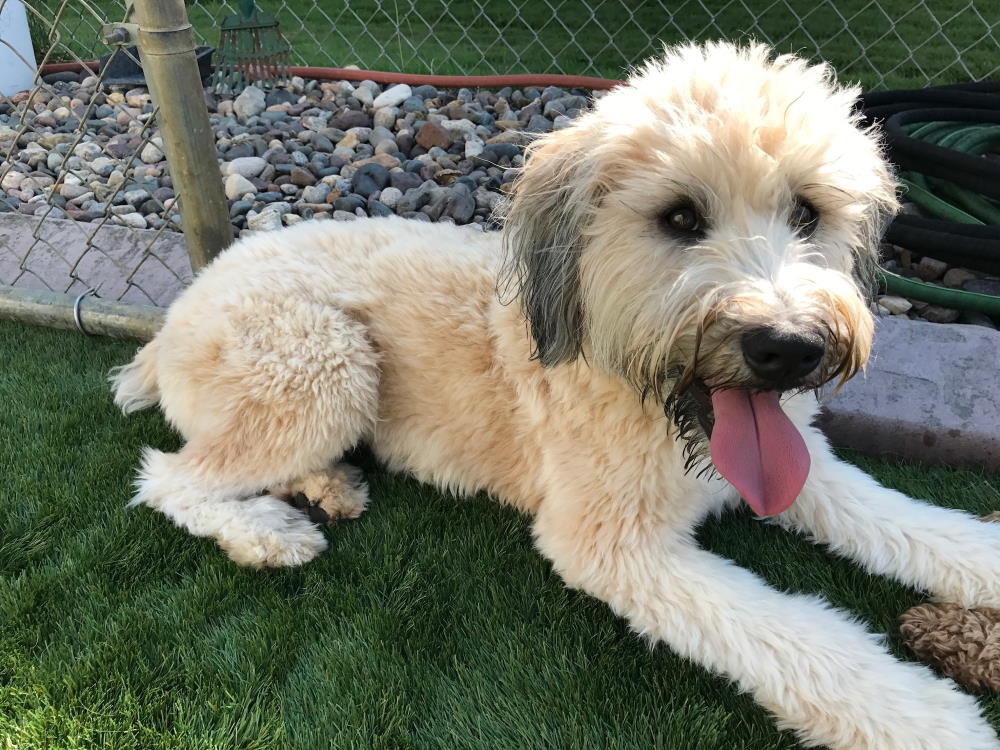4 EASY TIPS FOR PROPER E-COLLAR PLACEMENT

Proper E-Collar Placement
There are a few guidelines for proper e-collar placement. Today I’d like to give you four easy tips that affect the training and health of your dog in relation to wearing an e-collar. If you follow this advice, it will help ensure a better outcome for you and your canine companion.
1. CONSIDER YOUR DOG’S SIZE
When shopping for an e-collar, the first thing to consider is the size of your dog. Some e-collars are small and compact, but they can control dogs ranging in size from small to large. Some, while suitable for larger dogs, are best suited to small to medium-sized breeds. Dogtra has the all-new CUE or the very popular Dogtra 200C for toy breeds to small-sized canines. Although the straps are adjustable, you don't want a receiver that is too large for your dog.
2. FIND THE RIGHT CONTACT POINTS
Secondly, regardless of whether you have a long or short-coated breed, make sure you brush your dog to remove loose hair from the neck. Loose or dead hair trapped under the contact points will hinder the ability to make good contact with the skin. Brushing is also good for the health of the skin and coat.
If your dog has a smooth or very short coat, you can use the shortest contact points available. You might even consider the use of a comfort adapter if your dog’s coat is thin and the skin becomes easily irritated. Comfort adapters are configured differently than the standard two-contact point setup. They allow for a slightly looser fit of the collar to reduce the possibility of irritation. However, due to the design, they will diminish the output of stimulation, so be sure to take that into account and adjust accordingly.
For long or very thick coats, it is often necessary to switch to the longer 3/4-inch contact points. This allows you to work the points through the hair and ensure they are making contact with the skin. I’m not an advocate of shaving the coat in order to improve contact. However, there are times when using thinning shears to reduce the density of the hair may be necessary.
3. IDENTIFY THE BEST E-COLLAR PLACEMENT
Once you know you’ve established good skin contact, secure the collar strap so that the receiver is positioned on the side of the neck. By placing the receiver toward the side of the dog’s neck rather than centered over the trachea, you take advantage of having a more muscled, flat surface area to keep the collar in place.
It is also advisable to position the collar toward the upper 1/3 of the neck rather than farther down toward the chest. Because the neck is typically a smaller diameter near the top, collars that are placed near the chest have a tendency to slide forward when the dog lowers his head to sniff the ground. This will cause the receiver to “dangle,” and the contact points will no longer be touching the skin. You might think the dog is ignoring the stimulation and turning up the level when in fact, he simply is not feeling it at all due to loss of contact.
An easy reference point is to position the receiver a bit below the ear with the strap going around the neck below the Atlas bone. The Atlas is the first of the cervical vertebra. It is the large “butterfly” shaped bone that connects to the skull and allows for rotation of the neck. By snugging the strap below this point (see a detailed image of Atlas bone here), you will not impede the range of motion of the neck.
4. ADJUST E-COLLAR WEARING TO YOUR GOALS
How long or how often your dog should be wearing the e-collar is dependent on training goals. If your desire is to have a better-behaved pet around the home, then wearing the collar should be part of your dog’s routine day. If the collar is on routinely, you can interrupt and redirect potentially problematic behavior as it pops up.
However, if you have a working dog that lives in a kennel environment and your goal is to create a competition champion or a good hunting companion, you probably have less interest in managing daily manners and are more concerned about having the dog wear the collar when training or in the field.
The key is to be prepared to enforce when and as needed. If your dog is wearing the collar whenever there may be an opportunity to enforce one of the training goals, you are in a better position to be consistent. If the dog doesn’t have the collar on, you need to follow through in some other way to ensure that the dog becomes reliable. The e-collar simply makes follow-through easier on you, particularly if the dog is off-leash and at a distance from you.
As far as the safety factors involved in wear time, understand that a dog CANNOT wear the e-collar 24/7. Wearing the collar constantly will cause skin irritation and potential pressure sores due to the snug fit required for proper use.
On average, most dogs can wear the collar for 8 -10 hours per day without developing skin problems. But it is always important to relocate the receiver after a few hours of wear to reduce any likelihood of problems developing. Always check the neck before and after each use to make sure the skin looks healthy and no inflammation is developing.
Wet skin can also increase the chance of irritation developing. Therefore, after swimming, or if the dog has been in wet conditions, remove the collar and allow the skin to dry thoroughly before putting it back on.
If, at any time, you notice irritation, leave the collar off so that the skin can get airflow and if any signs of infection are present, seek medical attention from your veterinarian.
CONCLUSION
Now that you know the four crucial steps to fitting a remote dog training collar correctly, you can ensure the success of your training sessions. By selecting the right collar size and contact points, ensuring a secure collar fit, and taking care of your dog's grooming needs, you can be confident that your e-collar will perform effectively. Get ready to embark on a training journey with your furry friend!




